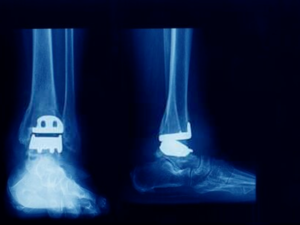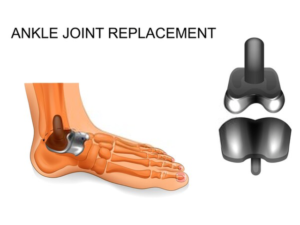Ankle Replacement
Ankle Replacement In Iran
Best ankle replacement hospital in Iran
 A large number of Iranian and foreign patients are going under ankle replacement in Iran each month. ankle replacement in Iran is on top of the middle-east regarding its skilled specialists and surgeons.
A large number of Iranian and foreign patients are going under ankle replacement in Iran each month. ankle replacement in Iran is on top of the middle-east regarding its skilled specialists and surgeons.
Here are the best hospitals for ankle replacement in Iran:
- Treata Professional Hospital
- Gandi Hospital
- Moheb Mehr Hospital
Ankle replacement cost in Iran
There is a significant difference between the cost of ankle replacement in Iran and other countries. The most important factors for the low price of it in Iran are:
- A large number of ankle replacement hospitals in Iran.
- A large number of applicants for ankle replacement in Iran.
ankle replacement cost in Iran varies depending on the ankle replacement and the hospital. An average cost of ankle replacement in Iran is $3000
Ankle replacement cost in Iran in comparison with other countries
This surgery costs $ in the U.S., $ in Europe, $ in Thailand and $ in Turkey.
Best ankle replacement surgeon in Iran
A lot of orthopaedic surgeries are being performed each year in Iran. Experienced Iranian doctors with an excellent record are performing the operations. One of the most important factors for choosing a good surgeon for ankle replacement in Iran is a doctor has done many ankle replacement surgery. You can find the best doctors for ankle replacement in Iran on our website by following their different experiences.
Why should you travel to Iran for an ankle replacement?
Many patients travel to Iran for ankle replacement. One of the reasons for this matter is Iranian specialists and surgeons who have high surgery success rates.
- Low cost of ankle replacement in Iran
- Low cost of accommodation in Iran
- Well experienced doctors
- The high number of ankle replacement in Iran
Ankle replacement centres accordant with today's European standards are performing the highest quality operations in Iran. Another reason for ankle replacement in Iran is its lower cost compared to other countries.
How long should I stay for ankle replacement in Iran?
About Ankle Replacement
 Total ankle replacement (also called ankle arthroplasty) is a surgical option for patients with arthritis of the ankle. This operation can relieve pain and maintain motion in the arthritic ankle joint. Arthritis can affect joints, over time, the smooth cartilage on the surface of the bones wears away. This can result in pain, inflammation, and swelling of the joints. Ankle replacement surgery is a procedure to replace this damaged joint to eliminate this pain and swelling for a long time. Arthritis does not have any kind of full treatment; all kinds of medications and procedures are just temporary and can just slow it down. But surgery can be the last (and maybe permanent) solution for this painful problem.
Total ankle replacement (also called ankle arthroplasty) is a surgical option for patients with arthritis of the ankle. This operation can relieve pain and maintain motion in the arthritic ankle joint. Arthritis can affect joints, over time, the smooth cartilage on the surface of the bones wears away. This can result in pain, inflammation, and swelling of the joints. Ankle replacement surgery is a procedure to replace this damaged joint to eliminate this pain and swelling for a long time. Arthritis does not have any kind of full treatment; all kinds of medications and procedures are just temporary and can just slow it down. But surgery can be the last (and maybe permanent) solution for this painful problem.
Recommended for
- Patients with osteoarthritis who are older than 50
- Patients who have a history of severe ankle injuries
- Patients who have Destroyed ankle joint surfaces and degenerated joints
- Patients who are not significantly overweight
Before Ankle Replacement
Patients should stop taking certain medications such as Aspirin, anti-inflammatory drugs and herbal supplements prior to the surgery. They should stop smoking a few weeks before and after the surgery. They should stop drinking and eating around 6 hours before the surgery. Also, they may need additional imaging tests, like X-rays, CT scan, or MRI before the surgery.
During Ankle Replacement
Patients undergo general anaesthesia during the procedure. The surgeon cleans the surgical area and makes an incision in the skin and muscle of the ankle and removes the damaged portions of tibia and talus. The new metal joint surfaces will be attached to the remaining joints using a special type of cement to hold them. A piece of plastic, that is then inserted between the two metal parts, to glide easily against each other. The surgeon closes the incisions with stitches.
Recovery
Patients may stay at the hospital for 2 to 7 days after the surgery. They may need to wear a splint for a couple of weeks. It is recommended to elevate the leg for the first week after the surgery. They should avoid any weight bearing on the joint for 4 to 6 weeks after surgery. The stitches will be removed 2 weeks after the surgery (can be done by any medical care specialist). The surgeon will prescribe painkillers and antibiotics after the procedure. Patients will need help from a physical therapist who will give some exercises to strengthen the repaired ankle.
